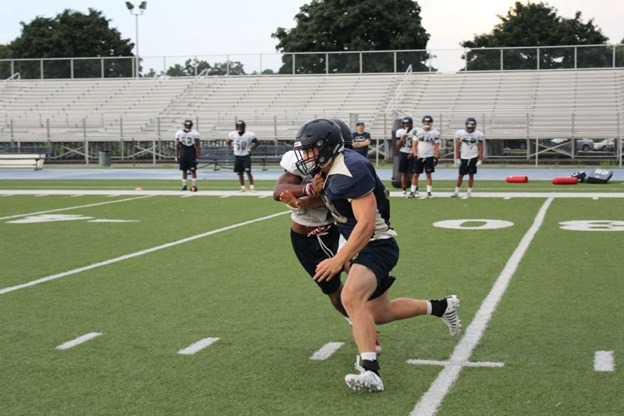Bleachers are a common name for rows of benches like those seen at a concert or a festival that are used to seat spectators during a sports event. Seat cushions are not included but may be purchased separately or found in retailers for use. Bleachers come in a wide variety of styles and sizes, so it’s important to know what options you have when shopping for a stadium or other event location.
Low Clearance Bleachers
In contrast to raised bleachers, low-rise bleachers are clearly identifiable by their defining characteristics, which are as follows:
- The seats span more space, and they sit almost at ground level with the deck.
- Many of these styles of seating will likely lack guardrails (https://en.wikipedia.org/wiki/Guard_rail)and stairways/ramps because of their low height.
- Low-rise bleachers should not exceed 2.5 feet in height at their tallest point on the front row.
- Low-rise styles are better suitable for indoor or modest outdoor events because of their restricted capacity to accommodate guests.
Bleachers With Stairs
The raised bleachers you see at most outdoor sports events are probably what you envision when you think of outdoor bleachers. In keeping with the literal meaning of the term “raised,” these seats sit above the ground level frame. The bleachers often have ramps and/or steps built into them to facilitate access to the upper levels of seating. Large bleachers with many rows of seating are typical in arenas that can accommodate moderate to large audiences.
Telescoping Bleachers
Telescoping or retractable bleachers, which are designed specifically for indoor use, are a great option for spectators for indoor events held in venues like gymnasiums and schools. The movable stages need balancing against the walls of the inside arena since they cannot stand on their own. Click here to read more about the codes this type of bleachers must adhere to for safety. However, the telescoping construction of these allows the same indoor area to serve several purposes by expanding or contracting the play/performance area as needed.
Aluminum Is the Common Style
Aluminum, steel, iron, concrete, or a combination of these are the most common materials used to construct bleachers. Aluminum bleachers are often used for outdoor events since they are weather-resistant and can be placed on any outdoor surface. In addition, they’re affordable, easily transportable, accessible for those using wheelchairs, and have flexible seating options.
By definition, bleachers are made of aluminum or steel tubes and frames, however some people also refer to I-beam buildings as bleachers. I-Beam seating configurations are permanent constructions that can hold crowds in the thousands, and their reinforced steel construction means they can stand the test of time. In this respect, they resemble concrete bleachers, albeit they are not quite as robust.
Portability Option Available
Aluminum’s low weight and strength make it a suitable material for many applications. For moving aluminum bleachers, anywhere from five to ten rows deep, a tow kit is available for purchase. All that is required is a tow hitch and a tiny tractor.
The pair of wheels and axle attachment are included in the portability package. The bleachers just need to be raised and the wheel units installed. The tire and axle unit are then inserted into the spindle sleeve. To fasten the axle, a galvanized machined bolt is used. The procedure is really rather easy to do.
The safest speed limit is about 5 miles per hour. Bleacher tow kits that can be transported from one location to another on the field have this limitation for a reason. They aren’t designed to be moved over roadways. Incredibly lightweight and easy to transport, aluminum bleachers have an incredible advantage:
Seating for 144 people may be quickly and easily arranged with the help of movable metal bleachers with 10 rows. An alternative is to use a smaller set of portable aluminum bleachers with just 5 rows, which can still accommodate 74 people. The bleacher’s frame has been fortified so that it may be easily relocated. Any venue has the ability to host events in more than one room with portable bleacher options. While it may be expensive to install Aluminum bleachers in several locations, portability means one set can be used at any of the locations.
A further perk is that excessive foot and vehicle activity on one field or event locale might be damaging its condition. The bleachers can be relocated to let the land rest, so it doesn’t deteriorate into a muddy mess.
Maybe one of the fields won’t be ready on schedule. An established field for a major event might have a water pipe burst and be rendered unusable. To solve the problem of where to put people, movable bleachers may be used.

